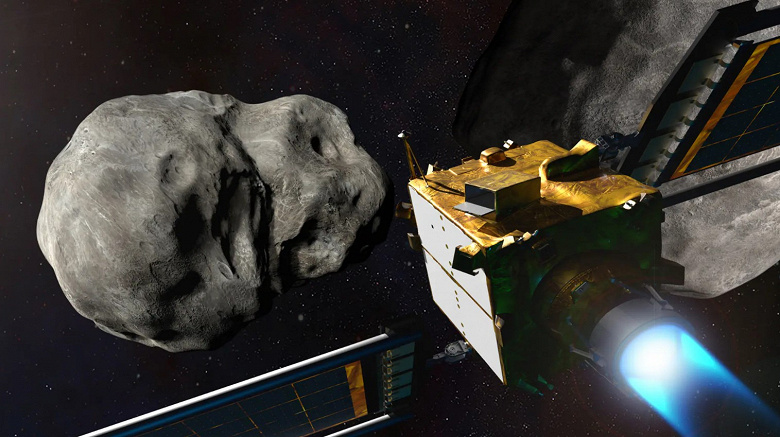Asteroid fragments could threaten future settlements on the Red Planet
During a NASA mission launched in September 2022 to deflect an asteroid, something unexpected happened: the trajectory of space debris was inadvertently set towards Mars.
The mission involved the Double Asteroid Redirection Test (DART) spacecraft, which collided with the asteroid Dimorphos, producing a significant amount of debris and space debris. Recent research indicates that some fragments of this collision may be heading towards the Red Planet.
The DART mission was a revolutionary experiment designed to test the ability to deflect potentially Earth-threatening asteroids. The strategy was to collide the spacecraft with Dimorphos, part of a double asteroid, and observe changes in its orbit. The successful demonstration showed that the asteroid's trajectory can be changed given sufficient time to prepare and execute the mission.
Dimorphos, the target of the DART mission, was not a solid mass, but rather «connected debris» asteroid. The collision with DART resulted in the ejection of large amounts of rock and dust into space. This unexpected result has resulted in a widespread scattering of debris, some of which is heading towards Mars.
Astronomers Marco Fennucci from the European Space Agency and Albino Carbonani from the National Institute of Astrophysics of Italy studied the trajectory of these fragments. In the study, they used numerical modeling to predict the impact path 20,000 years into the future. Scientists focused on 37 boulders discovered by the Hubble Space Telescope, ranging in size from four to seven meters across.
Study shows that while Earth is protected from these boulders, four of them could potentially collide with Mars — two in about 6,000 years and two more in about 15,000 years. Due to the lack of a protective atmospheric layer similar to Earth's, these rocks will likely fall to the surface of Mars intact. The impact could create small craters up to 300 meters in diameter on the already heavily cratered surface of Mars.
At this time, this might not seem like much of a problem since Mars has no inhabitants to worry about. However, by the time the asteroid fragments are predicted to intersect with Martian orbit, the planet may already be inhabited if crewed missions go as planned.

